
Camillo Sitte and the urbanistic gem of Přívoz
The Viennese architect, urbanist, and educator Camillo Sitte is considered one of the founding figures of modern urbanism and architecture. His seminal work „City Planning According to Artistic Principles“ (1889) influenced urban thinking not only at the turn of the 19th and 20th centuries but remains relevant today. Sitte’s most important works are associated with the Czech lands (such as the Tři Trubky Chateau, regulatory plans for Liberec, Teplice, and Olomouc) and particularly with Ostrava (including the church, town hall, and rectory in Přívoz, regulatory plans for Přívoz, Mariánské Hory, Moravská Ostrava, and Hrušov).
Sitte’s most extensive and comprehensive work is the regulatory plan for the new center of Přívoz, built in close proximity to the railway station. With the increase in population and buildings in the second half of the 19th century, Přívoz, declared a town in 1900, had to consider urban regulation. Therefore, Mayor Wilhelm Müller and municipal secretary Jan Grmela approached Sitte in 1893 to propose a new square with streets and public buildings on two previously undeveloped plots around the existing Nádražní Street.
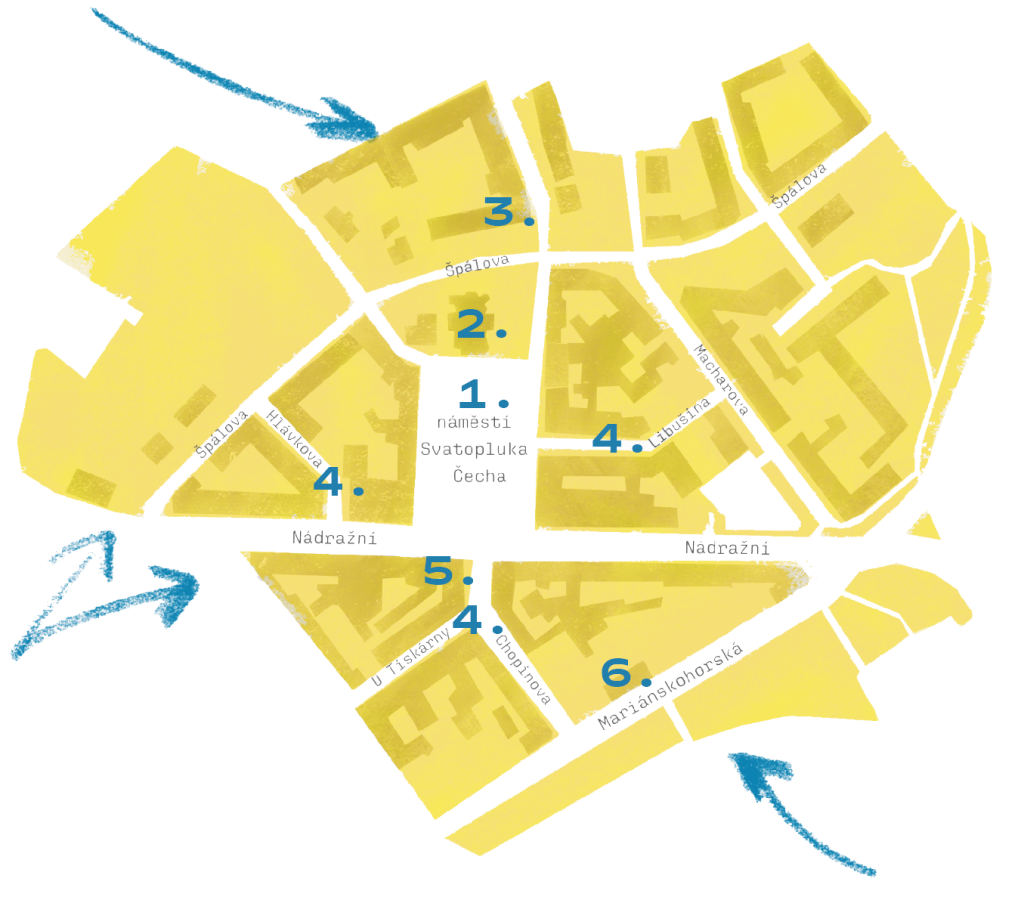
1. Svatopluk Čech Square
(1893–1895)
The Viennese architect, urbanist, and educator Camillo Sitte is regarded as one of the foundational figures of modern urbanism and architecture.
His seminal work „City Planning According to Artistic Principles“ (1889) influenced urban thought not only at the turn of the 19th and 20th centuries but remains relevant today.
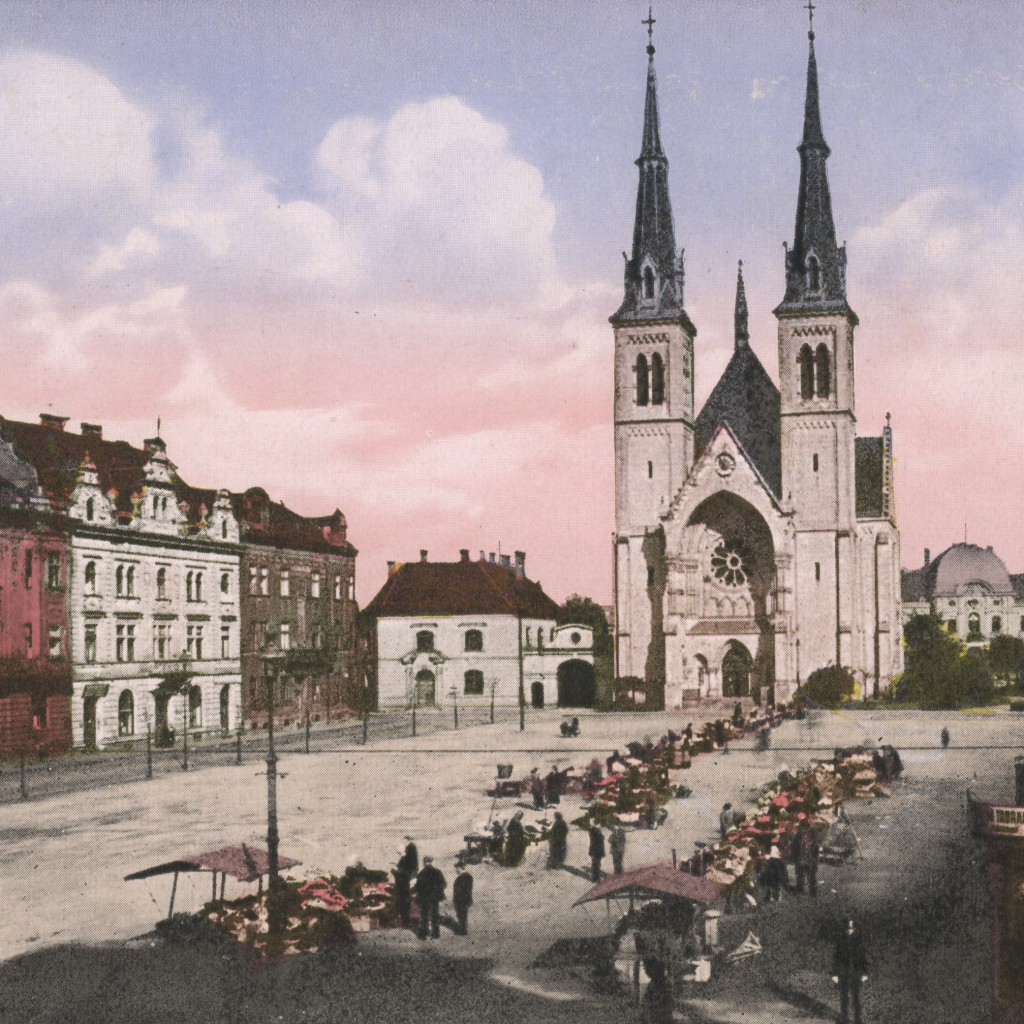
Sitte’s most important works are associated with the Czech lands (such as the Tři Trubky Chateau, regulatory plans for Liberec, Teplice, Olomouc) and particularly with Ostrava (including the church, town hall, and rectory in Přívoz, regulatory plans for Přívoz, Mariánské Hory, Moravská Ostrava, Hrušov).
GPS (mapy.cz)
2. The Church of the Immaculate Conception of the Virgin Mary with the rectory
(1894–1899)
One of the key elements of the Přívoz regulatory plan became the parish church in the style of late historicism. Sitte worked here with neo-Romanesque and neo-Gothic forms, central spatial arrangement, and an oval shape of the main nave.

He solved the massive dome above the nave, a characteristic element of Baroque buildings, as a concrete shell. Sitte’s work also includes the furniture and decorative painting of the interior, although it was repainted in the first half of the 20th century. The adjacent rectory building in a historicizing style has simplified facades compared to its original form and is connected to the church by a gate.
GPS (mapy.cz)
3. Town hall
(1895–1897)
Although Sitte originally intended to locate the town hall on the eastern side of the square, the site behind the church was eventually designated for its construction. The architect conceived the town hall as a Neo-Baroque palace building in the shape of an L, with its main wing emphasized by a projecting bay with a pilaster order and a segmental pediment with a coat of arms cartouche. Inside, the three-winged staircase leading to the first floor and the council chamber with a gallery (now an archive research room) are noteworthy features.
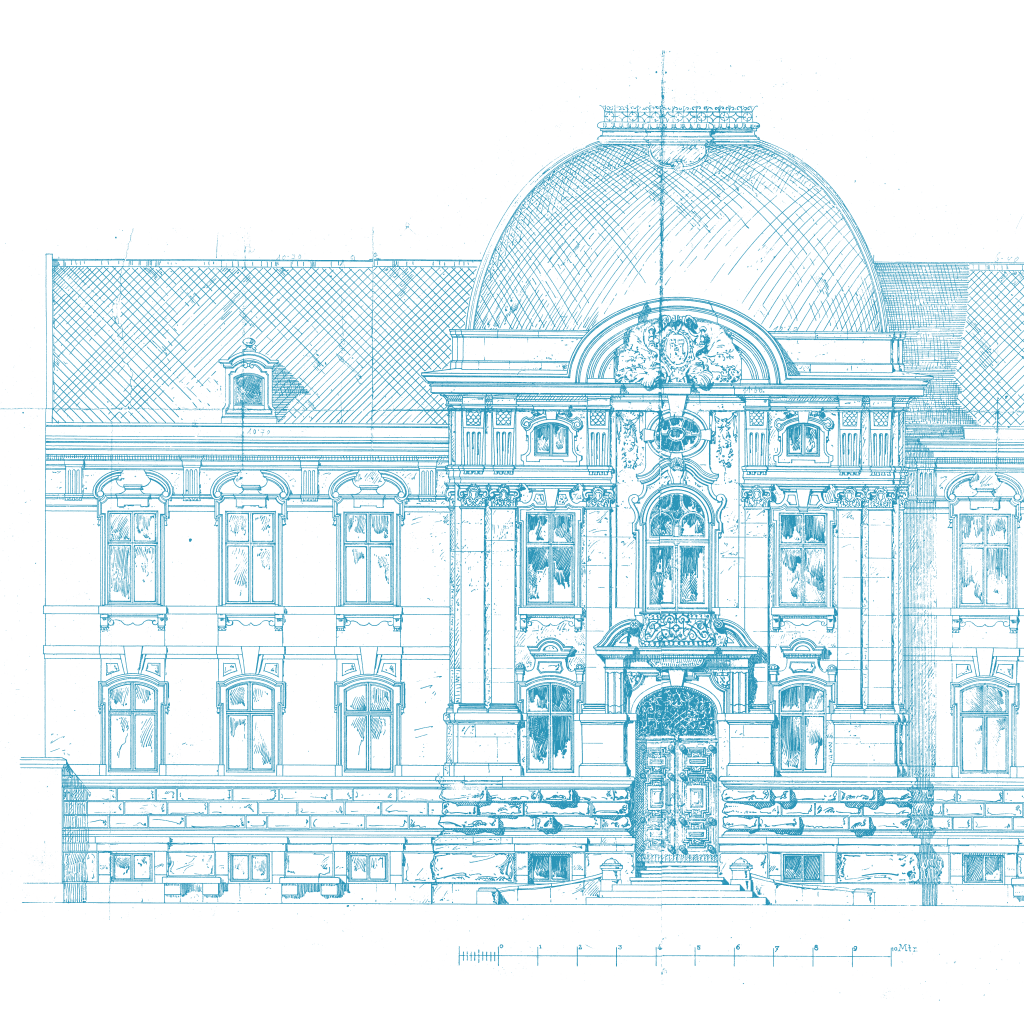
In the 1990s, an archival repository was added to the building according to a postmodern design by architect Miloslav Dydowicz.
GPS (mapy.cz)
4. Turbine Streets
(Chopinova, U Tiskárny, Libušina, Hlávkova)
In his most significant book, Sitte defined the principles of implementing so-called „turbine streets,“ which he aimed to use to shape enclosed spaces. The streets were meant to bend before reaching the square, avoiding direct connections at sharp angles, thus preventing the creation of poorly developable corner plots. Sitte also demanded that the streets terminate with architectural landmarks in the form of building corners with towers, bay windows, and other elements.
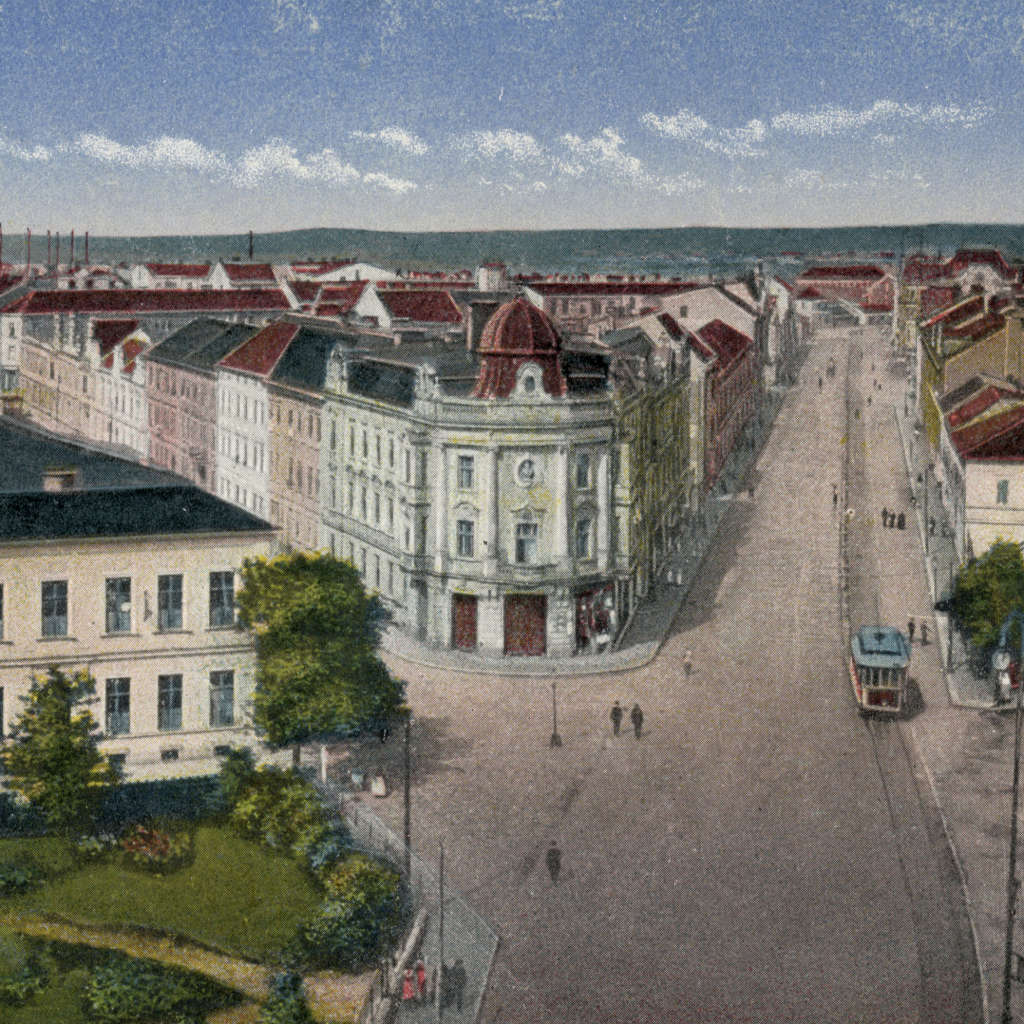
Based on the mentioned principles, Sitte sought to create picturesque, distinctive, and intimate urban spaces.
GPS (mapy.cz)
5. Rental house with a pharmacy At the Madonna
(1894–1895)
Sitte divided the new center of Přívoz into eight blocks separated by Nádražní Street and a system of turbine streets. The blocks were designated for the construction of rental houses with commercial premises on the ground floor and apartments above. They were designed by local builders and architects, and in the first phase, they consisted of single-story Neo-Renaissance and Neo-Baroque buildings with tower elements.
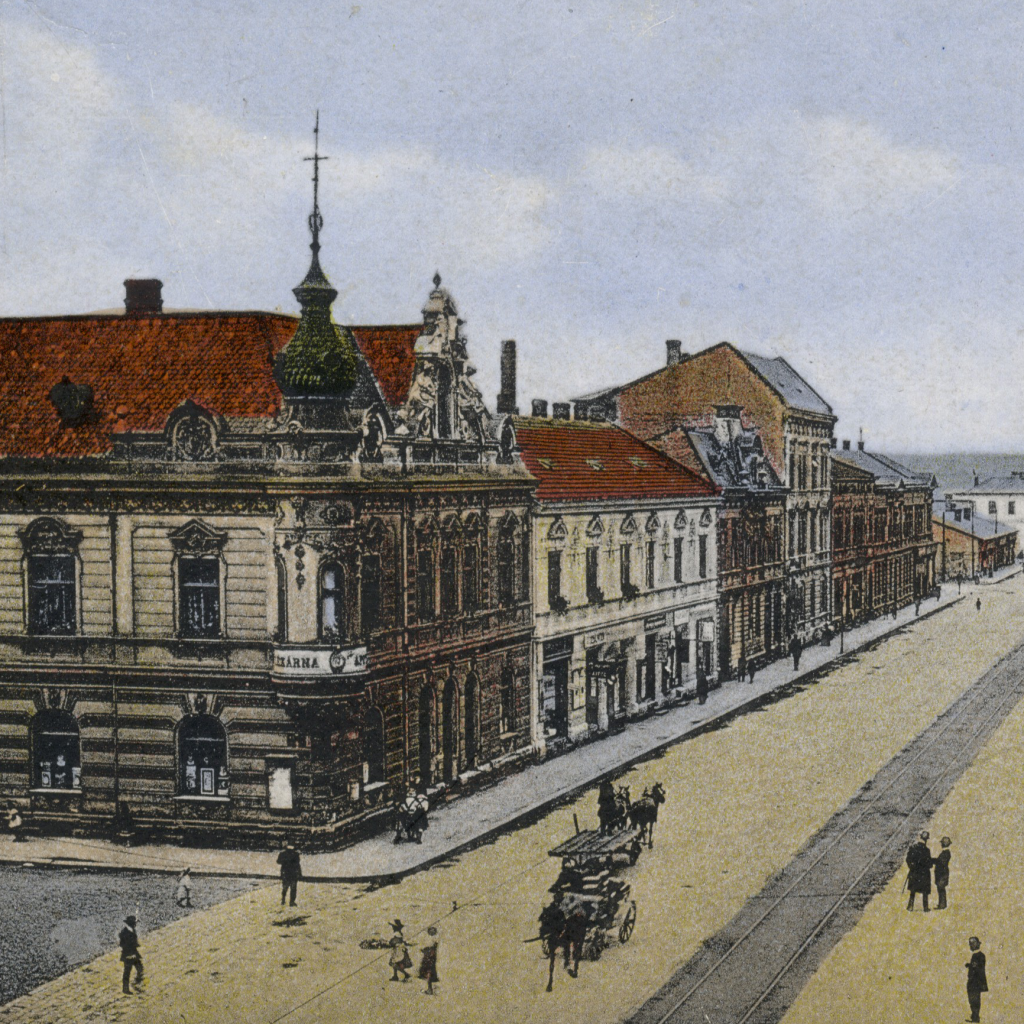
Among them is a Neo-Baroque house with a pharmacy, which builders Alois Mihatsch and Hans Ulrich constructed on their own initiative. The richly articulated corner tower bay window reflects Sitte’s principles of accentuating street perspectives.
GPS (mapy.cz)
6. The House of Jan Grmela
(1894–1895)
The Neo-Baroque house, designed by an unknown architect, with side triangular bay windows and prominent gables, was built by the municipal secretary and initiator of Sitte’s involvement in Přívoz, Jan Grmela.

While the house escaped demolitions that took place in this part of Přívoz in the 1980s, it is also an example of the dilapidated state in which this part of the Přívoz center still finds itself.
GPS (mapy.cz)
editorial team / Ilona Rozehnalová, Romana Rosová
authors of the texts / Romana Rosová, Martin Strakoš
photographs / Archiv města Ostravy
2023 © Fiducia